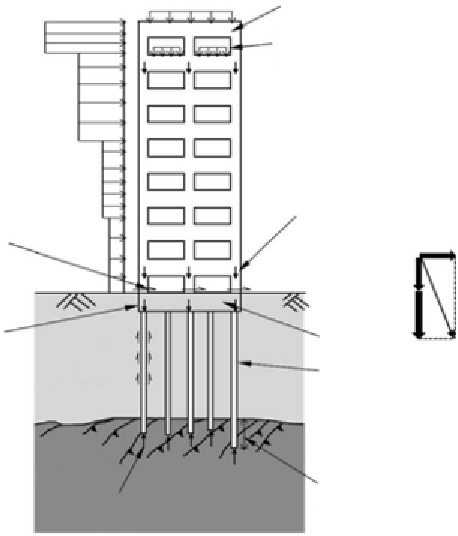Geology Reference
In-Depth Information
A structure will change the stresses in the ground and, in turn, be acted
upon by stresses from the ground due to gravity and tectonic forces,
wind, snow, earthquakes and perhaps from anthropogenic sources,
including blasting and traf
c. The loading condition for a high-rise
building constructed on piles is illustrated i
n Figure 6.1
. It is the task of
the geotechnical team, given the loading conditions from other mem-
bers of the design team, to ensure that there is an adequate Factor
of Safety for the foundations against failure and that settlement is
within the tolerance of the structure. The traditional permissible
stress approach, involving a lumped Factor of Safety to cover all
uncertainties, has been replaced in Europe and some other countries
and design codes by a limit state approach, which encourages
more rigorous consideration of different modes of failure and uncer-
tainties in each parameter and in the calculation processes itself
(
Table 2.2)
.
Total vertical load above pile = Σ [Dead load (including concrete self-weight
& imposed dead loads) + Live load + vertical component of Wind load due
to structural response from lateral wind force on each floor.].
live load such as snow
building
live load on each floor−
furniture/people etc.
windload
(plus earthquake
loading in seismic
areas)
dead + live load due to
loading from floor above
dead load
plus live load
taken on pile
cap
resultant load on
piles includes
vertical and
horizontal
components
lateral component of
wind and seismic load
(shear force) − needs to
be accounted for in pile
cap and pile design
ground level
total vertical load +
pile cap self-weight
will need to be
carried by piles
pile cap
skin
friction
piles
soil
rock
rock socket
friction
end bearing
stress
design loading on each pile
=
total vertical load above each pile + pile cap self-weight

